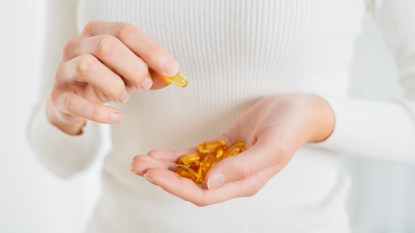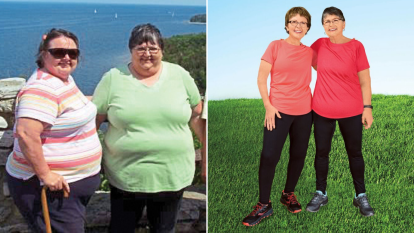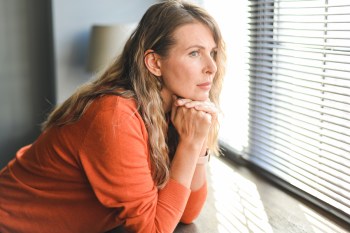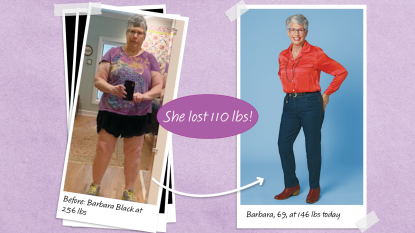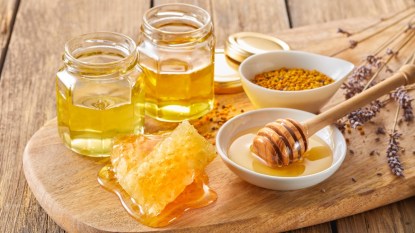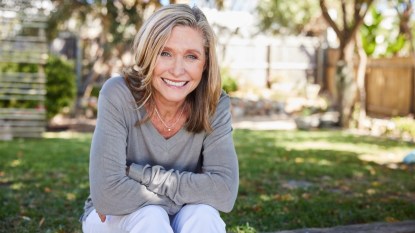Doctor + Physical Therapist: These Are the Best Foods and Exercise To Prevent Osteoporosis
Having chicken for dinner makes bones 40% denser
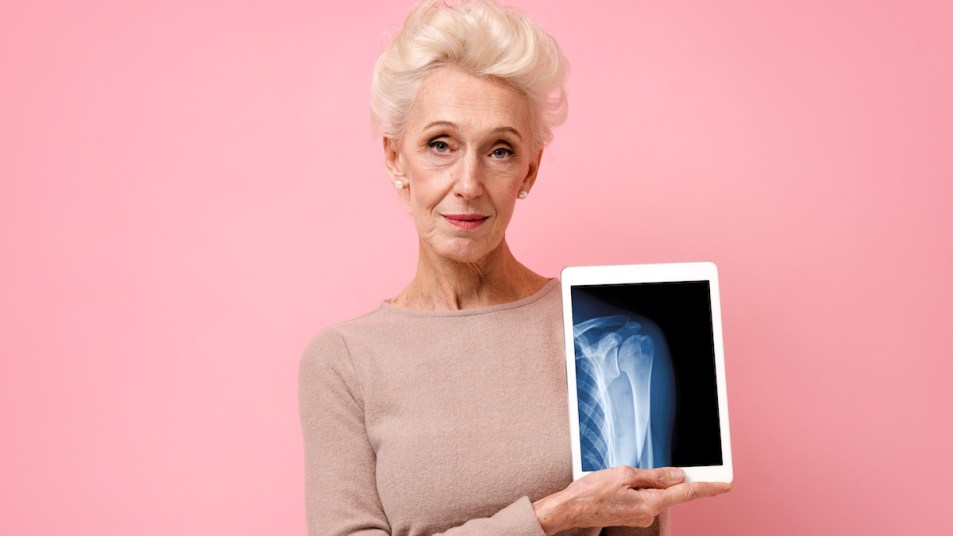
You know how important it is to keep your bones strong. That’s especially true after menopause, when the bone disease osteoporosis (which causes bones to become weaker and prone to breakage) becomes more common. Strong bones not only protect you from fractures if you fall and help you stand tall, but they also offer total body benefits. Higher bone density is associated with improved lung function, decreased back pain, and even a lower risk of hearing loss. And if you’ve ever wondered which foods and exercise prevent osteoporosis, you’re in luck. We asked a doctor and physical therapist to weigh in on the easiest ways to shore up your skeleton. Read on to see what they suggest.
Understanding osteoporosis
Osteoporosis is the most common bone disease in the world, affecting 50% of women and 25% of men over the age of 50. “At present, osteoporosis is underdiagnosed and undertreated,” says Meryl LeBoff, MD, Chief of the Calcium and Bone Section and Director of the Skeletal Health and Osteoporosis Center at Brigham and Women’s Hospital in Boston and Professor of Medicine at Harvard Medical School.
“Osteoporosis is a disease characterized by low bone mass, low bone density and structural changes in the bone that contribute to decreased bone strength and increased risk of fracture,” explains Dr. LeBoff. Osteoporosis is diagnosed based on bone density measurements. If your bone density number is 2.5 or more below the average for the young adult population, you are diagnosed with osteoporosis (more on bone density testing below).
It’s the connection between low bone density and fracture risk that makes osteoporosis so important to avoid: The tiniest changes in bone density correlate to huge changes in fracture risk. How huge? “If you get a 4% increase in bone density, you get a 51% decrease in spinal fracture risk and a 29% decrease in hip fracture risk,” Dr. LeBoff says. Considering that bone density drops by about 2% per year in postmenopausal women, counteracting this natural loss can drastically reduce your risk of debilitating fractures.
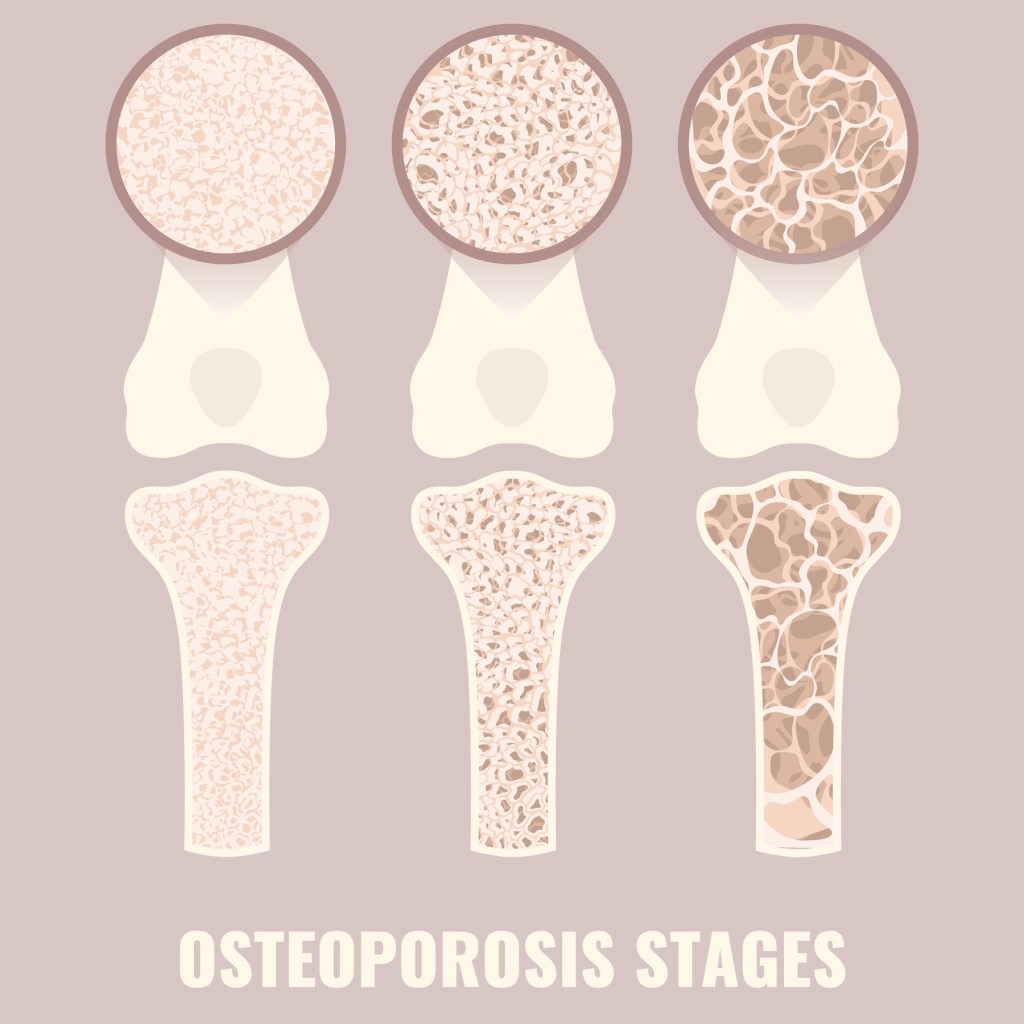
Related: Acting Like a Flamingo Strengthens Bones + More MD-Backed Ways to Ward Off Osteoporosis
Osteoporosis risk factors
Women are at a higher risk for osteoporosis than men, mainly because of the changes that happen during menopause. “Women obtain peak bone density in young adulthood,” explains Dr. LeBoff. But when they hit menopause, changes start to happen fast. “Postmenopausal acceleration of bone loss affects women because of lower estrogen levels. Age-related bone loss then affects both women and men a little later in the life course,” she adds.
When estrogen levels begin to decline, it throws off the balance of the bone turnover cycle. That’s when the resorption (or breakdown) of old bone is matched by the formation of new bone cells. Low estrogen speeds up the resorption step, which accelerates the loss of bone mass that occurs in the ten years post-menopause.
There are also numerous lifestyle factors, diseases, disorders and medications that cause or contribute to osteoporosis. These include high salt intake, low calcium intake, inadequate physical activity, cystic fibrosis, types 1 and 2 diabetes, celiac disease, inflammatory bowel disease, rheumatoid arthritis and multiple sclerosis. Medications such as antacids, proton pump inhibitors (which are used to treat acid reflux) and thyroid replacement hormone can also contribute. (Bothered by heartburn? Click through to our sister publication to see 9 natural ways to get rid of heartburn fast.)
How to get testing to assess your osteoporosis risk
A bone density scan is easy for doctors to perform and is quite safe. Also known as a DEXA scan, it requires you to lie on a padded table while x-ray scanning machines pass over and beneath you taking pictures. “It is extremely low radiation, like an airplane ride from Boston to Los Angeles,” says Dr. LeBoff. “There are ways to look at the bone density that are widely available and covered by most insurance carriers.”
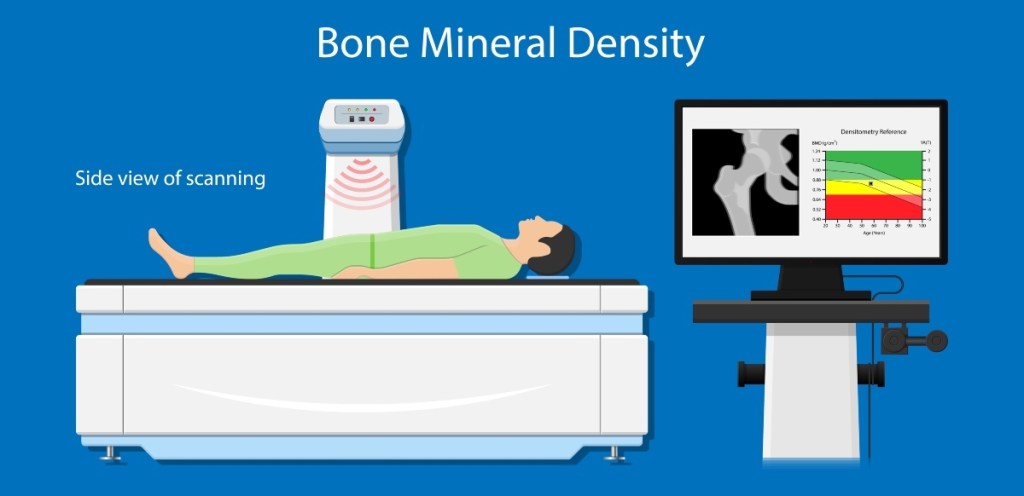
In general, bone density testing is recommended for all women 65 and older and all men 70 and older. For those with an increased risk of osteoporosis, doctors recommend testing as early as age 50. Likewise, any adults who break a bone after age 50 should undergo a bone density scan to determine if osteoporosis played a role. Worried about a poor bone density score? Don’t be. “The good news is we have very effective treatments to increase bone density and decrease fracture risk,” Dr. LeBoff adds. (Click through to see a simple home osteoporosis test that can tell you if it’s time to talk to your doctor.)
Foods that will help prevent osteoporosis
Making a few delicious tweaks to your diet can optimize the health of your bones to prevent osteoporosis. Read on to see some of the top study-proven picks:
Snack on yogurt and cheese
Calcium and vitamin D are the most important nutrients for bone health, says Dr. LeBoff. And low-fat dairy products like milk, yogurt, and cheese are the best way to get them. If you don’t eat dairy, Dr. LeBoff says that many non-dairy milks like almond and soy are fortified with both calcium and vitamin D. Women between ages 51 and 70 should aim for 1,200 mg. of calcium and 800 to 1000 IU of vitamin D per day.
According to research in the journal Nutrients, getting adequate levels of vitamin D daily can reduce your fracture risk by 33%. Another reason Dr. LeBoff is a fan of dairy: it contains both protein and calcium, a combination that research in the journal BMJ found lessens your odds of experiencing a fracture by 33%. Plus the duo shores up muscle mass to reduce your fall risk. (Click through to see how upping your intake the classic dairy food cottage cheese can speed weight loss.)
Nosh on drumsticks

In addition to calcium and vitamin D, vitamin K-2 is also essential for bone health. Why? It binds calcium to bone. To bump up your vitamin K-2 levels, add more foods like egg yolks and chicken to your diet. All of these dishes are rich in K-2. Or you might consider supplementing with MK-7, a form of K-2 that’s more readily used by the body. Research in the European Journal of Endocrinology found that women who did so had bones that were up to 40% denser after four years than those who didn’t supplement. One to try: NOW Foods MK-7 Vitamin K2 100 mcg. (Buy from Walmart.com, $22.50). (Click through to learn how supplementing with DHEA can bolster bones, too.)
Savor tomato soup
Lycopene, the plant pigment that gives tomatoes their red hue, inhibits the action of bone-degrading cells called osteoclasts. Indeed, a study in The American Journal of Clinical Nutrition found a diet high in carotenoids was linked to higher bone density.
Want the most bang for your buck? Cook your tomatoes. Lycopene is higher in cooked tomatoes (like in pasta sauce or soup), since heat releases the nutrient from tomato cells. And when salads and salsa call for raw veggies, consider adding avocado oil. This healthy source of fat significantly enhances carotenoid absorption. (Making sauce from scratch? Click through to see the simple hack to peel tomatoes faster.)
Fill up on fermented foods
Fermented foods like sauerkraut, kefir and kimchi are a top source of lactobacillus rhamnosus. This beneficial probiotic mitigates the effects of decreasing estrogen levels on bone strength. A study in Gut Microbes suggests that a daily dose of the probiotic may increase bone mineral density by 36% and reduce joint stiffness by 42% in six weeks. L. rhamnosus balances levels of two key immune cells to reduce inflammation and prevent bone from breaking down. (Click through to see more fermented foods that can boost your health.)
Kick back with a cold beer
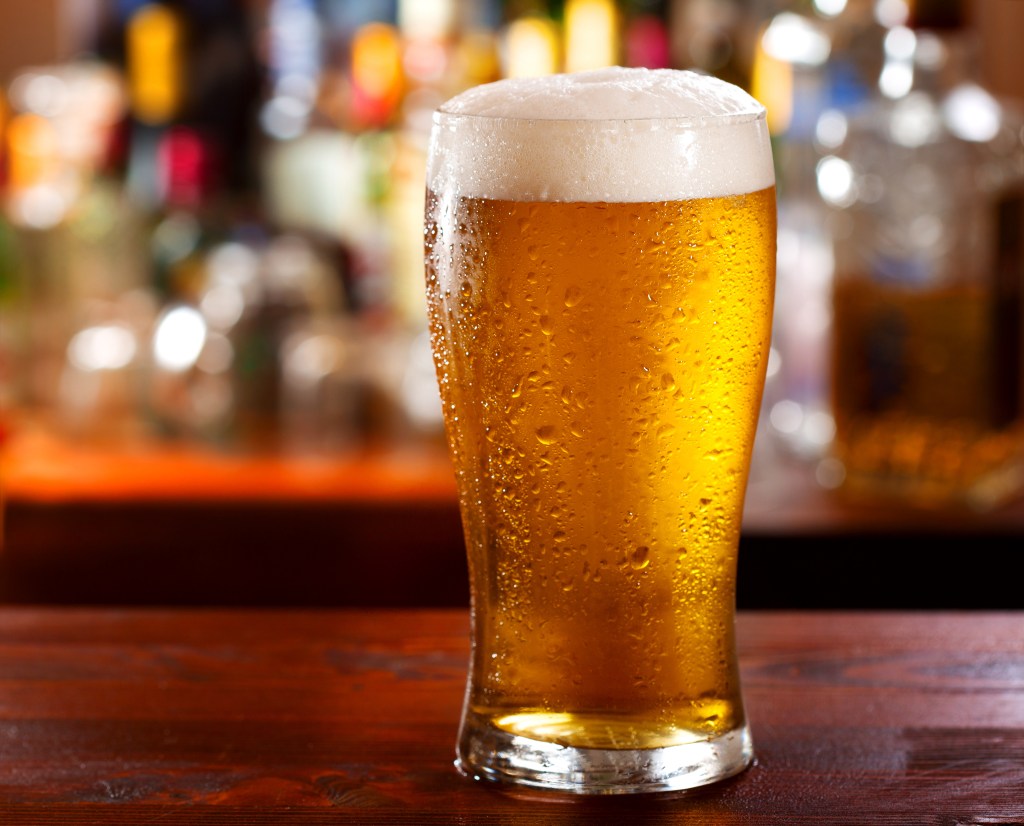
The next time you’re relaxing with friends of family, don’t hesitate to crack open a refreshing beer. Tufts University scientists found that post-menopausal women who enjoyed a daily beer had greater bone mineral density, meaning their bones were less likely to break, than those who abstained. Silicon in beer supports the formation of collagen fibers that strengthen existing bone and help create new, healthy bone cells. What’s more, beer’s boron increases the activity of cells that dissolve old bone and grow new bone. Not a fan of beer? The same study found wine provides a similar skeleton-strengthening perk. (Tip: If you have leftover beer, click through to our sister publication to see 15 ingenious uses for stale beer.)
Tip: Click through to learn how olive oil and lemon juice can improve bone health, too.
Exercise to prevent osteoporosis
“Exercise is essential for both preventing and managing osteoporosis,” says Kristen Gasnick, PT, DPT, a physical therapist at Holy Name Medical Center in Teaneck, NJ. “While osteoporosis can develop from a variety of factors, a sedentary lifestyle with little physical activity increases the risk.”
But it’s never too late to start moving more. “While regular exercise is key for preventing osteoporosis, regular exercise can definitely benefit those who have already been diagnosed with osteoporosis too,” Gasnick says. “Improving your physical activity levels and the types of exercises you perform can improve your bone mineral density and potentially reverse the extent of your osteoporosis as you build up new, healthy bone.” Follow these tips for maximizing your bone-strengthening efforts.
Ready to get started? The online learning video Bone-Strengthening Exercises for a Healthier You walks you through exercises and movements that promote bone health!
Choose weight-bearing activities
“People with osteoporosis should focus on weight-bearing exercises — those that involve being on your feet and bearing weight through your lower body,” says Gasnick. “These types of exercises increase the ground reaction forces that occur at bones, which stimulate bone cells to grow stronger bone.” These include activities like walking, hiking, climbing stairs, dancing and playing pickleball. (Click through to see why fitness legend Denise Austin is obsessed with pickleball.)
Practice resistance training
Strength training or resistance training with your body weight, weights or resistance bands can be beneficial for bones, too. “Because fractures of the femur (thigh bone) are among the most common fracture sites in people with osteoporosis, lower body moves that strengthen the muscles of the hip and thigh are ideal to build up stronger bones,” Gasnick explains. “Exercises like squats, step ups, and lunges all incorporate weight-bearing movements with multiple muscles of the lower body working together.”
According to a review in Osteoporosis International, resistance training significantly increases bone density in both the femur and the lumbar spine in postmenopausal women. And a combination of resistance training and weight-bearing activities delivered even better results. (Click through to see how resistance band pants reversed one woman’s osteoporosis.)
Build strength at these 3 key points
“The spine, femur and wrist are among the most common sites for fractures for people with osteoporosis,” says Gasnick, so building strength in these areas is key. “Abdominal strengthening exercises that work on core stability can help stabilize and protect the spine. And hip strengthening exercises that strengthen the glutes can help protect the femur,” she adds. “These muscles are also important for maintaining balance while standing and walking, which is important for reducing the risk of falls and subsequent risk of fractures from those falls.” Wrist curls can help strengthen the muscles around the wrist.
For more ways to strengthen your skeleton and ward off osteoporosis:
- After Menopause, Osteoporosis Risk Increases — But the Foods You Eat Can Reduce It
- This Simple Home Test Can Tell You if You Have or Are at Risk of Osteoporosis
- 6 Simple Secrets to Stronger Bones — Reduce Osteoporosis Risk Without Thinking About It
This content is not a substitute for professional medical advice or diagnosis. Always consult your physician before pursuing any treatment plan.
A version of this article originally appeared in our print magazine, Woman’s World.


